“Constructing Memories -Architecture as a framework to analyse Berlin’s struggle with redemption through the mental processes of forgetting”
The thesis is about constructing memory by analysing the mental processes of forgetting. These include the three themes of Amnesia, Nostalgia and Mis-remembering.
Sigmund Freud writes that in mental life nothing that has once existed is ever lost. He asks us to imagine Rome to be like the unconscious, “a psychical entity with a similarly long, rich past, in which nothing that ever took shape has passed away, and in which all previous phases of development exist beside the most recent.” Freud was careful to warn that in no sense could the city be like the life of the mind, because he asserts that no city can ever be this because if it were so, the city would consist of all buildings that had ever been built, at all time, within it. In other words, a city can only contain what has been built and exist at a moment.
I would like to challenge Freud’s understanding of memory, I believe memories adjust and change, therefore destroying the original memory. Memories do not sit on top of one another, rather merge together. The proposal analyses the mental processes of memory and reproduces it in an architecture which analyses Berlin’s history and evokes an emotional response to a building which reflects the collective memory.
By challenging historic architecture and replicating details and forms, I am aware of the complications to ‘copying’ history, and therefore these ‘replications’ will be altered from their original function.
I am suggesting architecture can be designed in a complex way that is ambiguous and only those seeking for the answer will notice it. The unconscious mind is in the detail. The proposal represents the ideas of how memories can become architecture. It expresses how image and textures are taken from history and classical architecture and brought into the present. Forms have transformed into something that is recognisable but still different. Unlike critical reconstruction this process acts as a memory to the historical rather than a copy.
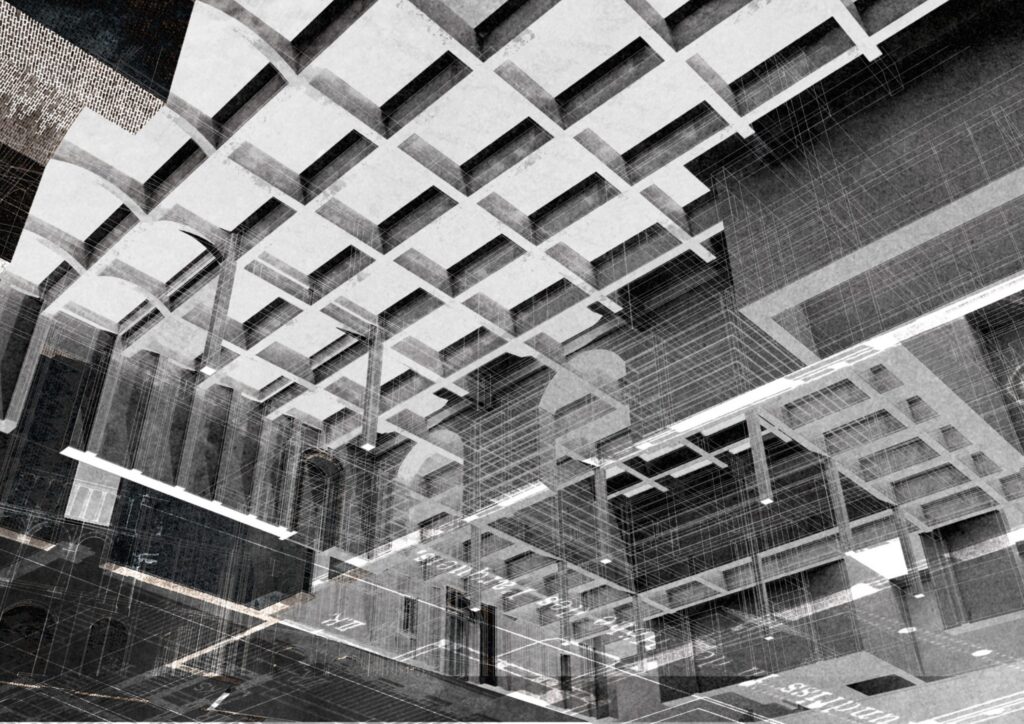
Axonometric of the Art Gallery, illustrating the coffered ceiling
The layers of lines seen in the image suggest memories forgotten.

The overlays of memories seen on site are not just buildings destroyed in this location but from the memory of the collective around Berlin. The plans have different ties to the site, misremembered and displaced they have ended up here. Building from mental processes means to allow for the imperfections and forgetfulness, therefore they do not need to rely on direct analysis. This plan represents the mind along with the ambiguity and randomness that makes it human.
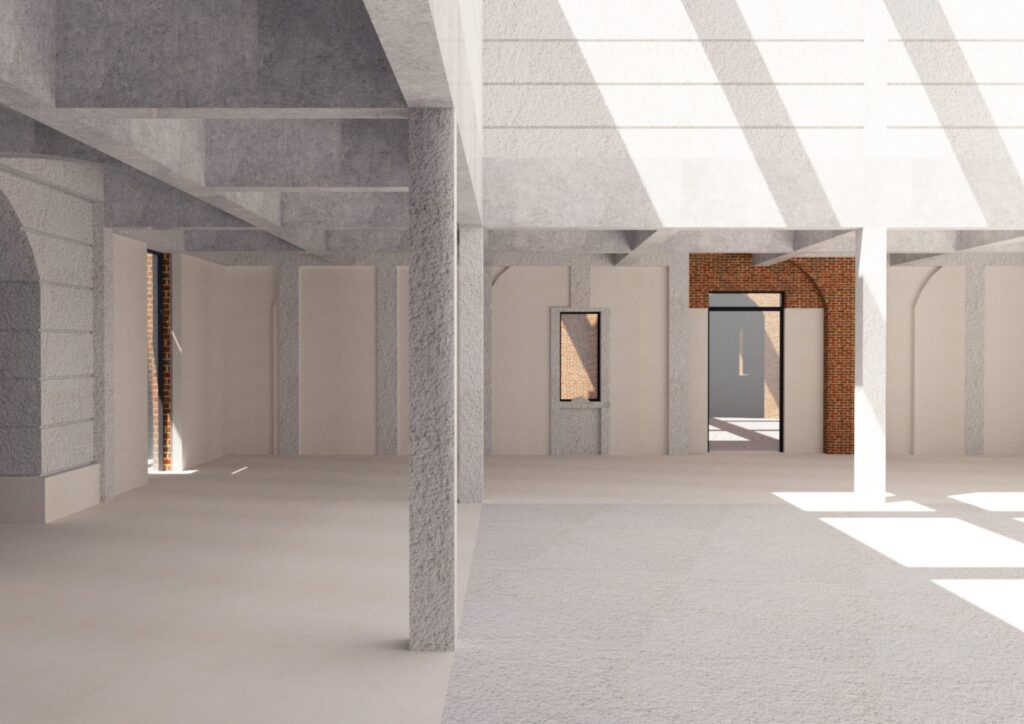
The use of casting is in both the architecture and the objects displayed within the art gallery, thereby everything that is cast is part of the exhibit. The rooms play with architectural forms relevant to moments of history and specific buildings in Berlin.
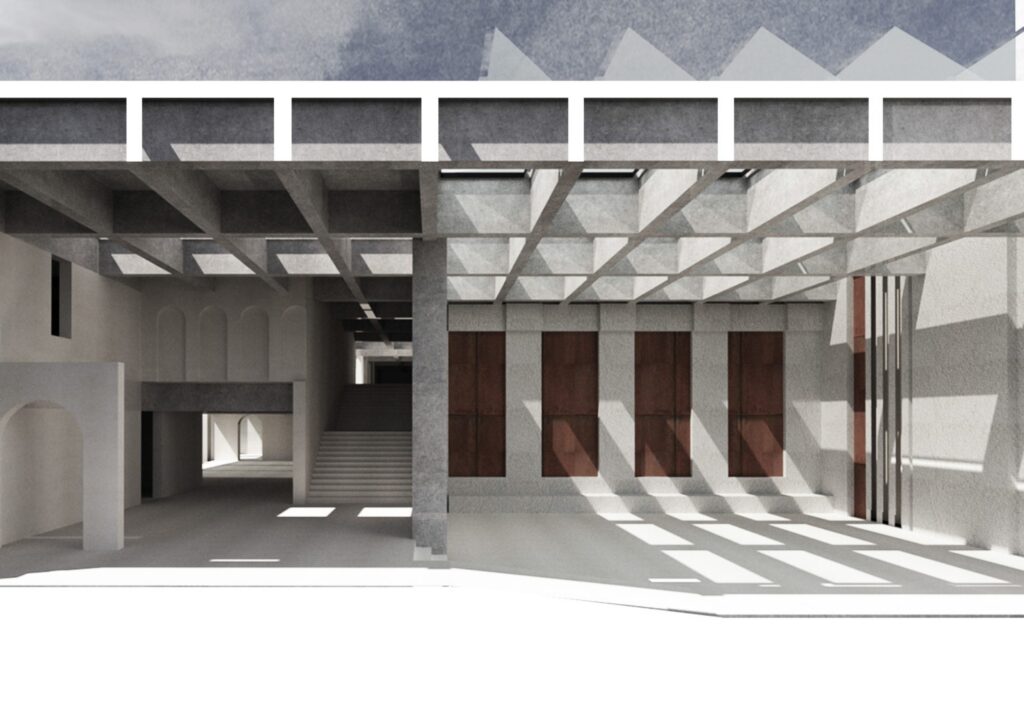
Section of the Museum , illustrating how the lighting transforms the space
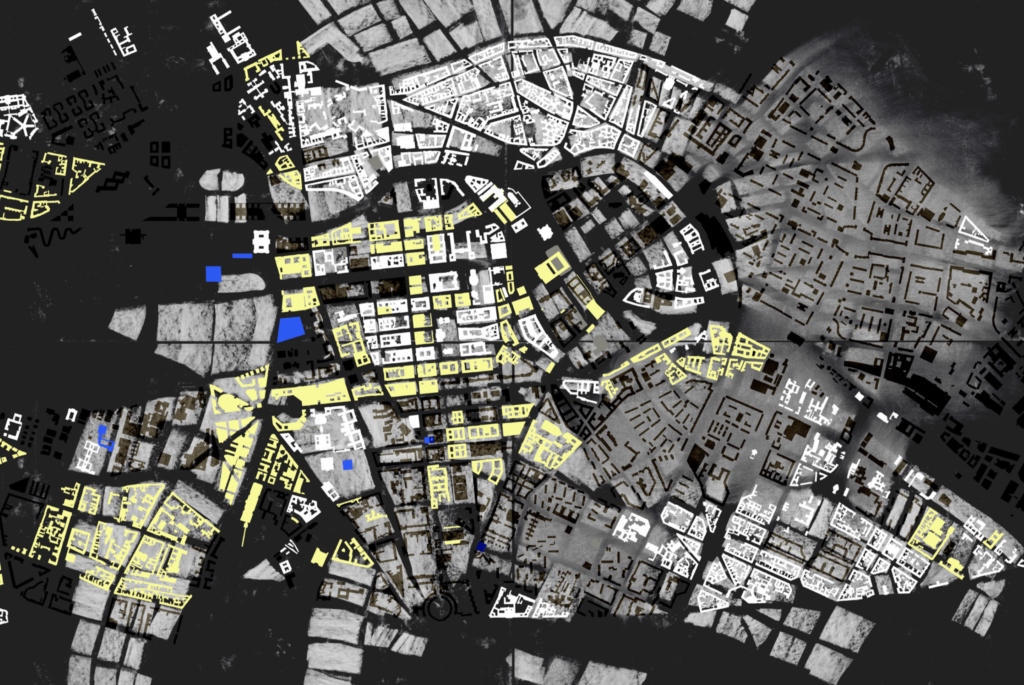
Memorial layers of eradication and reconstruction in Berlin
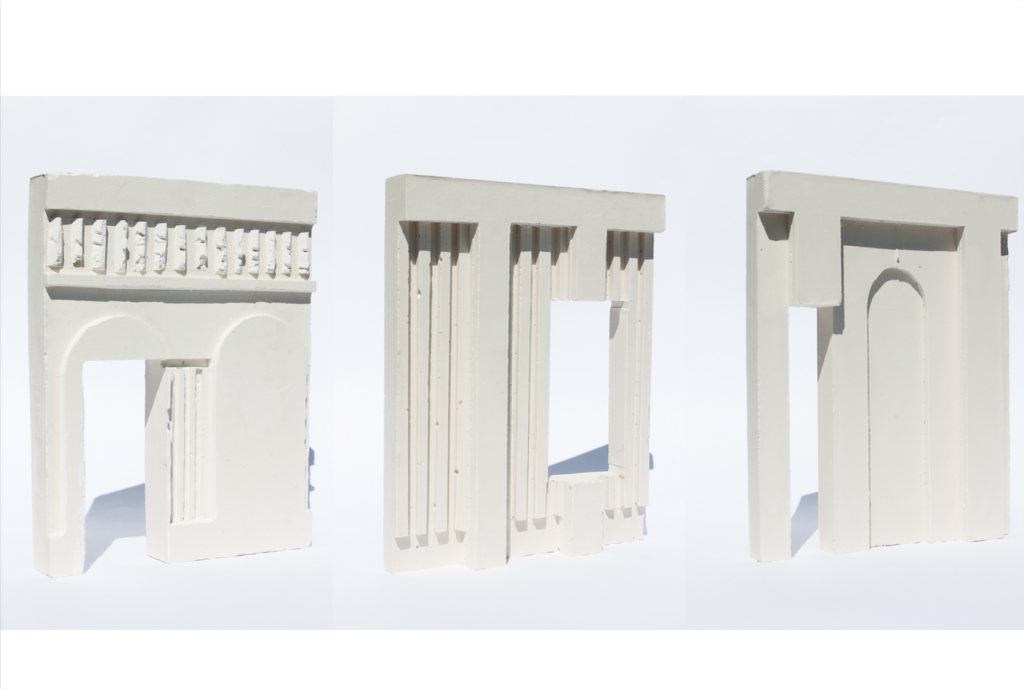
Notions of remembrance, amnesia and misremembering explored through castings
CONTACT EMAIL: izzybazett@gmail.com
Curated by Andreea-Ioana Ciutac
